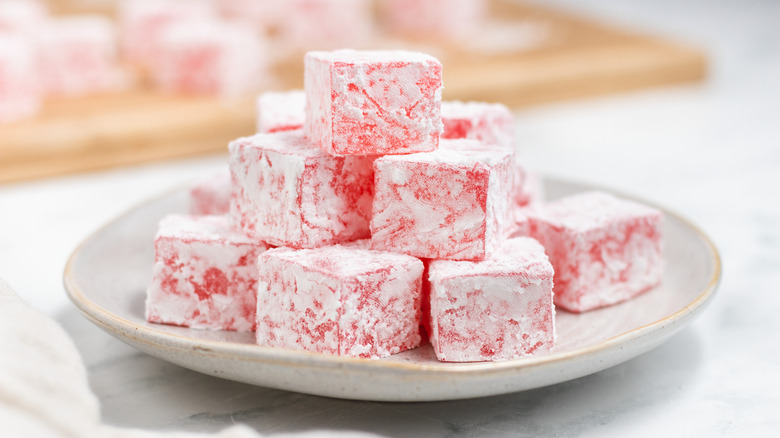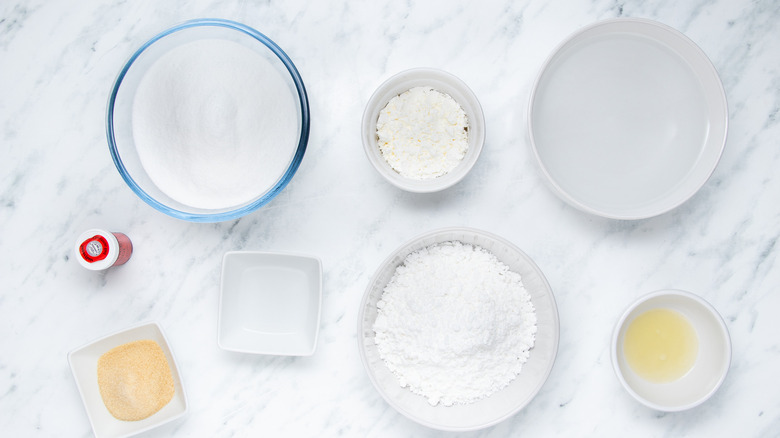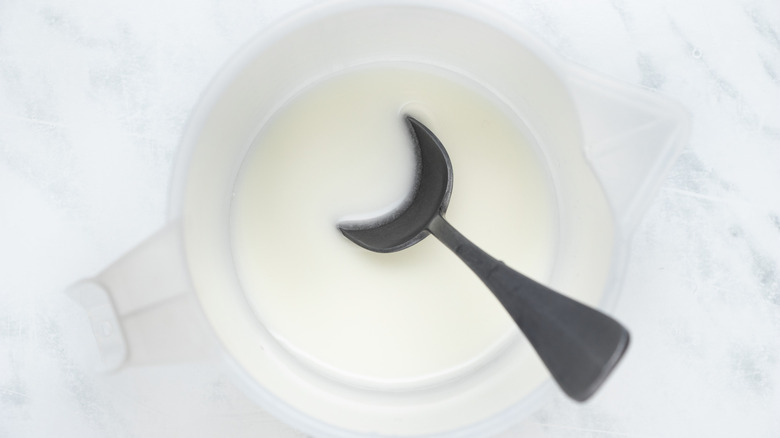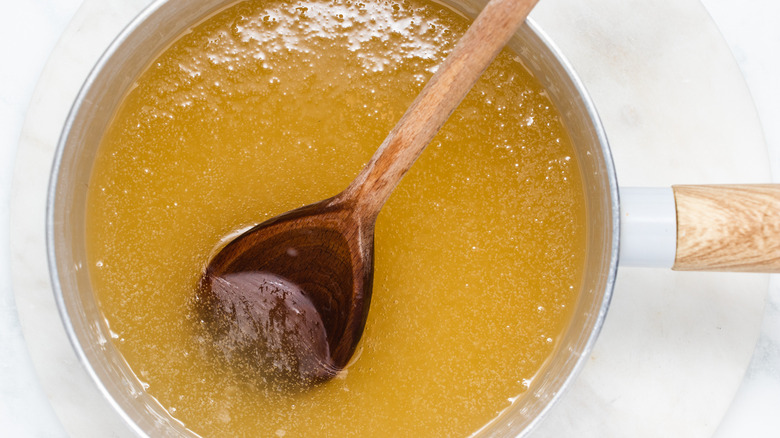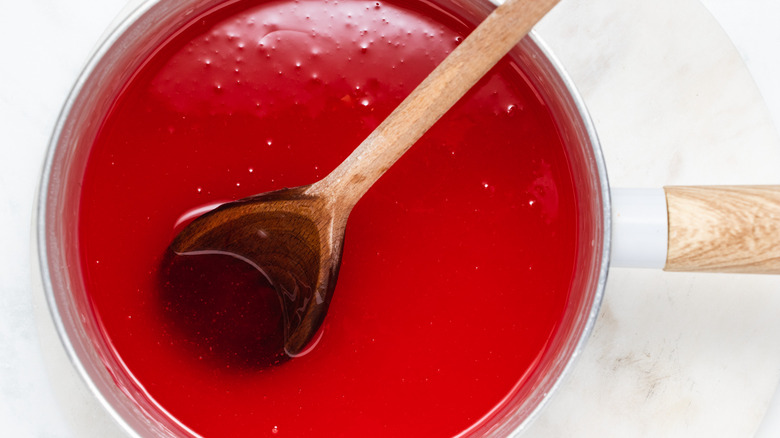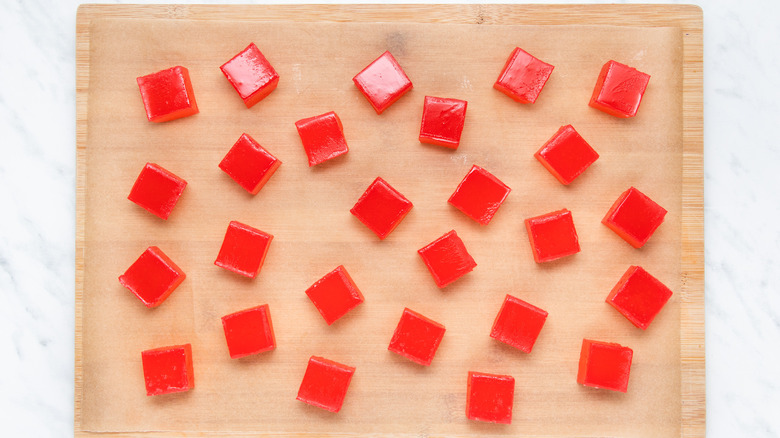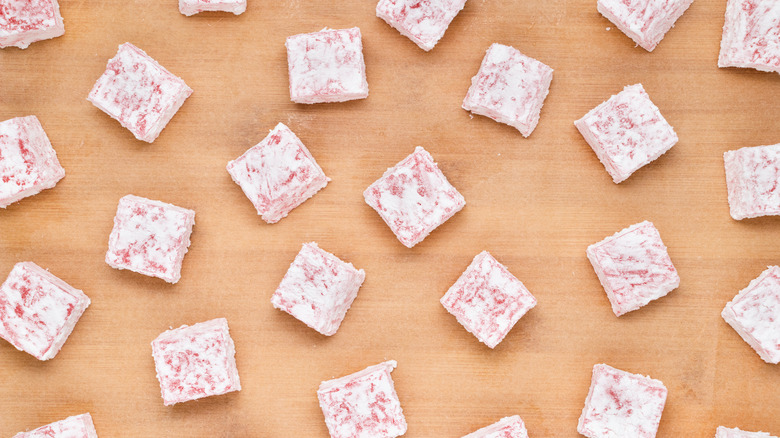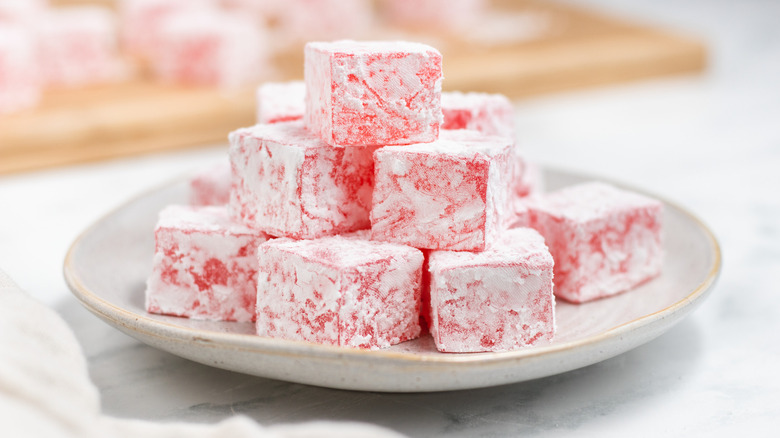Rose Turkish Delight Recipe
A Turkish delight has been around forever and as you can see from the title — it's a staple in the Turkish culture. According to The Culture Trip, this treat dates back over 500 years and it just so happens to be one of the first sweets ever introduced in the world. Many people would buy this sweet treat for special occasions, even wrapping it with lace handkerchiefs to jazz it up. Today, it's just as popular and just as tasty.
Recipe developer Catherine Brookes of Blue Sky Eating came up with her own spin on this Turkish classic that's great to bring a crowd together and that's great if you want something that's a little bit outside of the box. "This recipe is really fun to make and the result feels like something special despite being surprisingly easy! It's a great one to make as a gift," Brookes raves. "The unique floral flavor of rosewater is what makes Turkish delight special," she shares, adding that "the taste is sweet and floral."
Gather the ingredients for this rose Turkish delight
You will only need a few things to whip up this rose Turkish delight, and if you bake a lot — you may have some ingredients in your pantry already. All you need is cornstarch, water, caster sugar, lemon juice, gelatin powder, rosewater, red food coloring, and powdered sugar. "Rosewater has quite a distinct flavor so I wouldn't recommend subbing it here," Brookes notes. "In the U.K. you can find it in the baking section of most large supermarkets."
Once you have those things, you can make this rose Turkish delight.
Grease the pan and mix cornstarch and water
It's time to get down to business! Take out a small loaf pan and grease it before lining it with parchment paper. Then, grease the parchment to add that triple layer of protection, which will precent the mixture from sticking to the pan.
Now, grab a mixing bowl or jug and add the cornstarch and ½ cup of water. Use a spoon to stir and combine well.
Mix the remaining ingredients in a saucepan
You will need to bust out a large saucepan for this next step. Place it on your stove and add the remaining water and the cornstarch mixture that you just whipped up. Then, toss in the sugar, lemon juice, and gelatin. "Although traditional Turkish delight doesn't contain gelatin, adding it here helps it to set more easily," Brookes says.
Turn the heat to medium and continue cooking until the sugar dissolves. Be sure to stir the mixture frequently during this time.
Let the mixture simmer and add food coloring
Once the sugar dissolves, reduce the heat to a simmer and let the mixture cook for about 25 minutes, until it achieves a smooth and glossy consistency. "Make sure to simmer the mixture for the full 25 minutes until thickened, as this will ensure it sets later," Brookes notes.
Let it cool for 10 minutes before adding the rosewater and the food coloring to the mix. Then stir through to combine the rosewater with the other ingredients.
Let it sit and slice
Now, you can pour the completed mixture into your prepared pan. All you have to do is leave it out to sit at room temperature for at least 8 hours (or overnight).
Once set, remove the block from the pan and slice it into cubes. As a helpful reminder, this recipe yields 32 cubes! You can place the cubes on a plate or a board. but just make sure that you leave space in between each one so they don't stick together. Now, they need to sit and sweat for t least 24 hours.
Mix the sugar and cornstarch together
We're almost to the finish line and this is the last step. In a small bowl, mix the powdered sugar and one tablespoon of cornstarch together. After the 24 hours, dip the Turkish delight pieces into the mixture to coat well. The powdered sugar adds even more sweet flavor to this wonderful dessert.
Serve and enjoy
Now, these tasty rose Turkish delight bites are ready to be consumed. These are great served as-is, but Brookes has another serving suggestion for chocolate lovers. "If desired you could also dip the Turkish delight in melted chocolate," she shares.
Luckily, this dessert is great to make ahead of time and you can enjoy them well after you make them! "Leftovers should keep well for 2 weeks in an airtight container," Brookes shares. We hope these are a hit at your next party or gathering!
Rose Turkish Delight Recipe
For a sweet and floral take on a classic dessert, try making this easy rose Turkish delight recipe and sharing it with your friends.
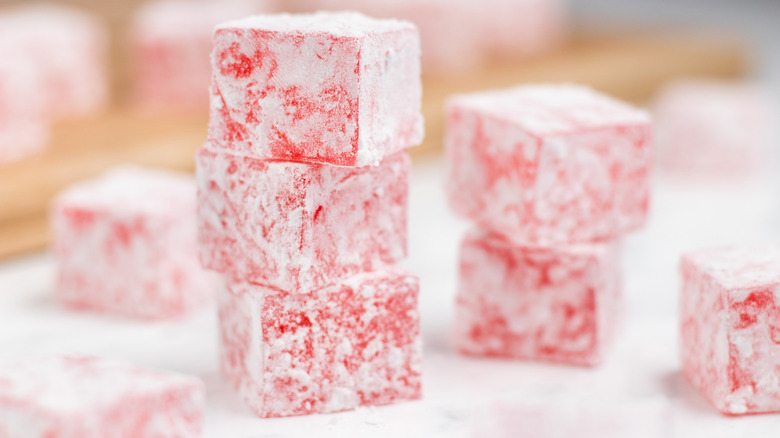
Ingredients
- ⅓ cup cornstarch plus 1 tbsp to dust
- 1 + ½ cups water (divided)
- 2 cups caster sugar
- 1 tablespoon lemon juice
- 25g gelatin powder
- 1 tablespoon rosewater
- Few drops of red food coloring
- ¾ cup powdered sugar
Directions
- Grease and line a small loaf pan with parchment paper and then grease the paper, too.
- Add the cornstarch to a bowl or jug with 1/2 cup of water. Stir well to combine.
- To a large saucepan, add the remaining water, cornstarch mixture, sugar, lemon juice, and gelatin. Heat over a medium setting, stirring frequently, until the sugar and gelatin have dissolved and the mixture is starting to boil.
- Simmer for 25 minutes until thick and glossy. Then leave to cool for 10 minutes.
- Stir through the rosewater and food coloring.
- Pour the mixture into your prepared pan. Leave to set overnight at room temperature (at least 8 hours).
- Remove the Turkish delight block from the pan and slice into cubes. Place them onto a board or plate well-spaced apart and leave them to sweat for 24 hours.
- Mix together the powdered sugar and 1 tbsp cornstarch. Dip each Turkish delight piece into the mixture to coat.
Nutrition
| Calories per Serving | 353 |
| Total Fat | 0.0 g |
| Saturated Fat | 0.0 g |
| Trans Fat | 0.0 g |
| Cholesterol | 0.0 mg |
| Total Carbohydrates | 86.8 g |
| Dietary Fiber | 0.1 g |
| Total Sugars | 78.6 g |
| Sodium | 12.4 mg |
| Protein | 3.6 g |
